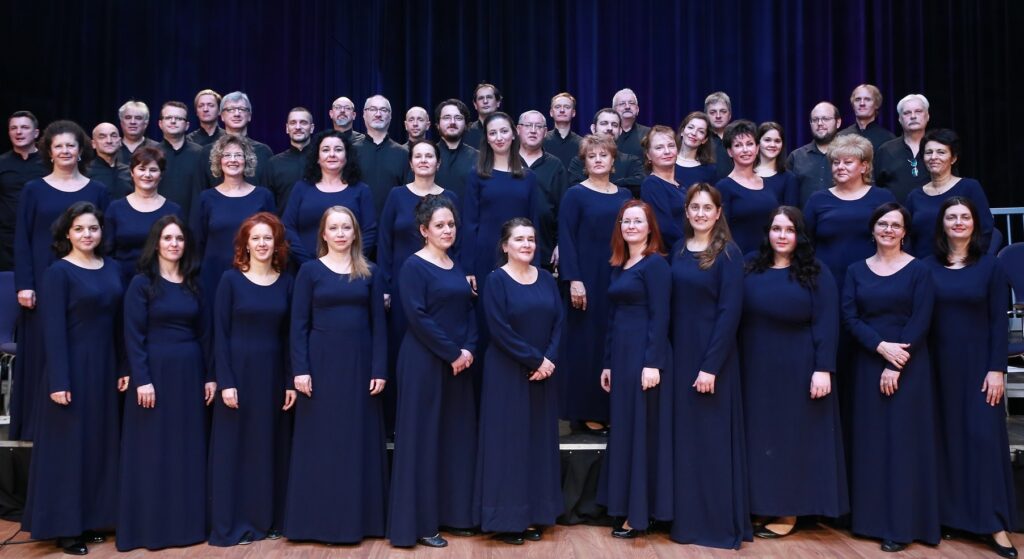Debrecen’s Kodály Philharmonic and Kodály Choir will have the opportunity to meet the music-loving audience of city once again on Friday, May 28th. The Season closing concert is a selection of works by Hungarian classics and contemporary composers.
At the gala-like event, the artistic directors and conductors of the orchestra and choir will all perform, including Zoltán Kocsis-Holper, Imre Kollár, László Kovács, Dániel Somogyi-Tóth. István Kovácsházi and the Cantemus Choir of Nyíregyháza will participate as guests.

Season Closing Concert
Date: May 28, 2021, 7:30 p.m.
Venue: Great Forest (Nagyerdei) Open Air Theatre
Played musical pieces:
- Liszt: Les Préludes / conductor: Dániel Somogyi-Tóth
- Kodály: Dances of Galánta / conductor: Imre Kollár
- Péter Wolf: 5 movements from Wolf-temperiertes Klavier (2CD) / conducted by: László Kovács
- Péter Tóth: Da pacem, Domine / conductor: Zoltán Kocsis-Holper
- Kodály: Psalmus Hungaricus / conductor: Dániel Somogyi-Tóth / soloist: István Kovácsházi
With the participation of Kodály Philharmonic Orchestra Debrecen / Cantemus Mixed Choir (conductor: Soma Szabó) / Kodály Choir Debrecen (conductor: Zoltán Kocsis-Holper)
The concert can be visited with any season ticket for the Kodály Philharmonic Debrecen 2020/2021 season (Napló, Korzó, Gulyás, Rubányi, Mozaik).
Reservations are made on a first-come, first-served basis.
The concert can only be attended by presenting a security card and an identity document together.
More about the music in the show:
The show is led by Liszt’s evergreen symphonic poem Les Préludes (Foreplay), first presented in 1855.
The work that accompanies the main stages of human life was written under the influence of a poem by Alphonse Lamartine. His musical foreshadowing, however, is, interestingly, a choral work for male voices and piano, written in 1844, entitled Les quatre éléments (The Four Elements).
Les Préludes was created from an instrumental introduction, a prelude to the choral cycle of Joseph Autran’s poems, which was also arranged by August Conradi and Joachim Raff, but was then finalized by Liszt and made a benchmark for program music.
Among Kodály’s orchestral works, Dances of Galánta was composed in 1933 and it was perhaps the most frequently played one. In addition to its autobiographical determination, its originality and popularity are mainly due to its thematic richness and lavish orchestration.
Kodály spent part of his childhood in Galántán in the Highlands, where he experienced the musical tradition of Mihók, the melodic material of which can also be found in 1800s Viennese work. The reason for composing the work was the 80 year anniversary of the Orchestra of the Philharmonic Society.
The masterfully crafted piece simultaneously applies the characteristic slow-fast structure, melodic world, dotted and syncopated rhythms of verbunk music. The role of the clarinet stands out from the orchestral ensemble, which evokes the characteristic sound of the performers.
The score, built with perfect dramaturgy, actually reveals a village life that walks through a wide range of moods, from melancholy to playfulness to unbridled cheering. The performance of the Dances of Galánta requires virtuosity from both the orchestra and the conductor.
No wonder that it was played by the best ensembles and conductors around the world., Contemporary composer Péter Wolf’s original solo piano work “Wolf-temperiertes Klavier ” refers not only in its witty title but also in its structure to J. S. Bach’s famous series, after using all twelve notes of the octave as basic tones in both major and minor.
However, unlike Bach, Wolf did not compose fugues — only preludes — that are more reminiscent of Chopin’s preludes. Their tone pushes the boundaries between genres by combining the harmony of classical and jazz music. From some of the parts of the work, which was completed in 1918, the composer also made a version for orchestra.
The pandemic caused irreparable loss in the family life of our excellent contemporary composer Péter Tóth. The pain he felt over the loss of a close relative and his longing for peaceful tranquility inspired Da pacem, Domine (Give Peace, Lord). His mixed choir work, subtitled “In memoriam defunctorum”. The Church song is well known in the text of the ancient antiphon and also in its melody through Márton Luther. Péter Tóth, however, composed his choral work as an independent composition, which will be presented to the audience for the first time.
Similar to Kölcsey’s Anthem, Kodály’s Psalmus Hungricusa is still one of the most Hungarian and esteemed of literary works and it has a prominent place in Hungarian cultural history. Budapest celebrated the fiftieth anniversary of the unification of Pest, Buda and Óbuda in 1923.
The capital commissioned works by the three most important Hungarian composers, Bartók, Kodály and Dohnányi for this occasion. Kodály’s humanities studies must have played a decisive role in the fact that the composer decided to make music from the paraphrase of the psalm of the fifteenth-century Protestant preacher, Mihály Végh.
The text and music of Psalm 55 depict all elemental struggle and suffering that the Hungarians have endured over the centuries. Human goodness and wickedness, deceit, and gentleness will gain their worthy reward through divine justice — we could summarize the message of the Psalm.
Kodály’s cathartic work, condensed into 23 minutes, was also a great breakthrough for him. From that moment on he was considered a master of international significance. The power of Kodály’s vocal art and the perfection of his prosody are shown with elemental force In the oratorio work created in rondo form.
The nuanced orchestral texture provides a perfect framework for the sometimes dramatic, sometimes lyrical dialogue of the biblical tenor soloist who portrays King David and the choir.